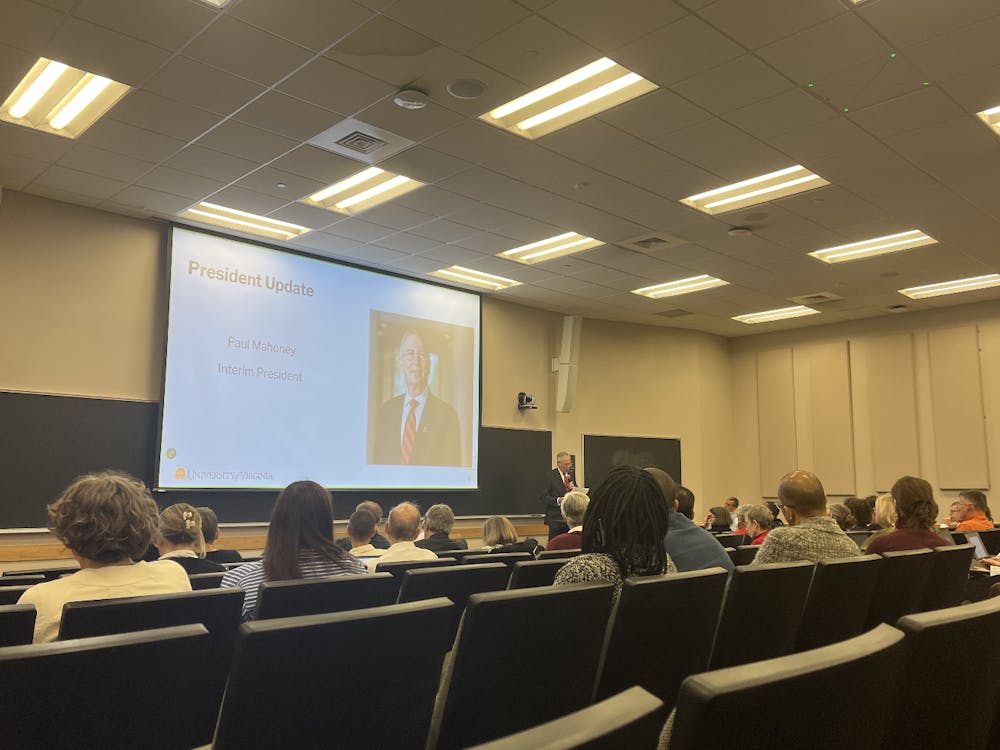Two distinct yet related questions shape the future of affirmative action - whether the practice will continue and whether the practice should continue.
The answers to both questions rest on the results of battles now being waged in the courts, in the political realm and in the minds of the American people.
Some experts have observed waning support for affirmative action in the judicial system and in public opinion, and view this decline as evidence affirmative action might not last much longer.
"There's a trend both in the courts and the political arena against affirmative action," Law Prof. Kim Fourde-Mazrui said.
A 1996 federal court ruling in Hopwood vs. Texas ended affirmative action in Texas public schools. As a result of referendums in California and Washington, both states ended affirmative action in 1997 and 1998, respectively.
"Those are two liberal states, in which voters spoke with their ballots," said Richard Blum, director of legal affairs for the American Civil Rights Institute, an organization that opposes affirmative action.
Though NAACP Chairman Julian Bond, a University history professor, agreed that a trend against affirmative action exists, he said he sees limits to its scope.
"I think [the trend] exists because most Americans think racial discrimination is not a problem today," Bond said. "They don't see the need for remedies to a problem they don't think exists."
Bond said though both the courts and public opinion have turned against affirmative action, support remains strong in state legislatures and private businesses.
"Private business has embraced affirmative action," Bond said. "It sees it as a business imperative."
The key claim against affirmative action is that the practice has been charged as reverse discrimination that succumbs to all the same moral problems as discrimination against blacks and other racial minorities. Furthermore, affirmative action opponents argue that the practice is demeaning to the same minorities it supposedly benefits.
First-year College student Alex Golden said he thinks affirmative action is working reasonably well at the University, but he understands the argument against it.
"I don't think affirmative action is the solution," Golden said. "It makes whites believe minorities' accomplishments aren't real accomplishments."
In rebuttal to these claims, Michigan Law Prof. Richard Lempert, an affirmative action supporter, offers four reasons why the practice should continue. Lempert argues that affirmative action is needed to compensate for past discrimination, to counteract current discrimination, to encourage diversity and to provide minority communities with better services.
"There's a tremendous legacy [of discrimination] from the past," Lempert said.
Bond agreed with Lempert and said he thinks both conscious and subconscious current discrimination exacerbates the problem.
"I don't think we give enough weight to present-day discrimination," Bond said.
At a school that did not desegregate until about 40 years ago, some believe whites still may have certain advantages over blacks based on past policies. In particular, since few blacks entered the University until the 1970s, blacks may be less likely to benefit from the admissions advantage of having a parent who attended the University.
First-year Engineering student Doug Lee said he thinks the University should continue to consider affirmative action policies in admissions.
"Affirmative action equals the playing field for a lot of students who come to this school," Lee said.
Blum, however, rejects the notion that past or current discrimination justifies affirmative action.
Given that integration occurred decades ago, the time has come to stop considering past discrimination in public policy, Blum said.
Blum also disagreed with the idea that current discrimination justifies affirmative action, claiming varying levels of achievement between different racial groups is not necessarily caused by discrimination.
But Karen Holt, director of the Office of Equal Opportunity Programs, echoed arguments supporting affirmative action to achieve diversity.
Diversity, in all its forms, "is something that will enrich the entire University and produce graduates who will better fulfill the University's mission," Holt said.
Blum disagreed.
"That precept destroys individuality - it makes all blacks interchangeable," Blum said.
Finally, Lempert said affirmative action is needed to improve services in minority communities.
Even within the same socioeconomic class, minorities receive inferior health care and legal services when compared to whites, he said.
Because minorities are much more likely to provide services to members of their own communities, more minorities need to be accepted into law schools and medical schools to prevent such problems from getting worse, he said.
"Affirmative action is necessary at professional schools for integration of the upper and upper-middle classes," Lempert added.
Blum disagreed, arguing that the idea that only minorities serve minority communities is a myth.
"Anyone living in the inner city would want to go to the best doctor available," Blum said.
Affirmative action has become a buzzword in American politics, public discourse and especially institutes of higher education.
Even though the two opposing sides have radically different views as to whether affirmative action should continue they both trace their ideology to the same source.
Lembert portrays affirmative action as being necessary for integration of minorities while Blum also claims the roots of his position are in the civil rights movement.
With individuals on both sides of the affirmative action issue claiming to be the rightful heirs of the civil rights movement of the 1950s and 1960s, its legacy in future policies is yet to be defined.






